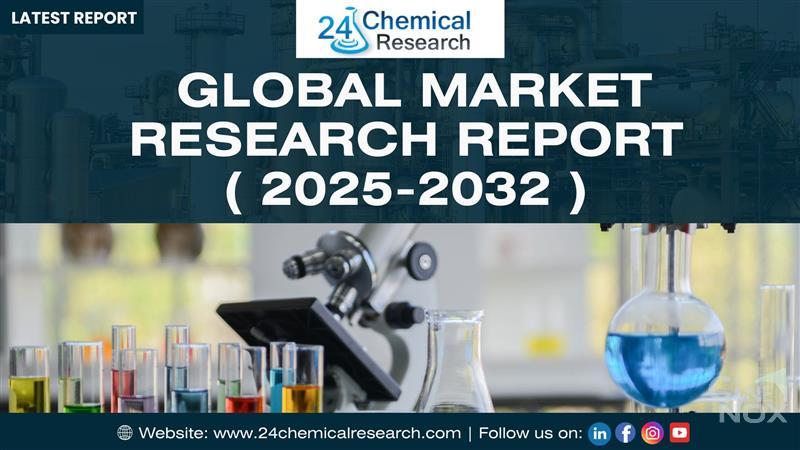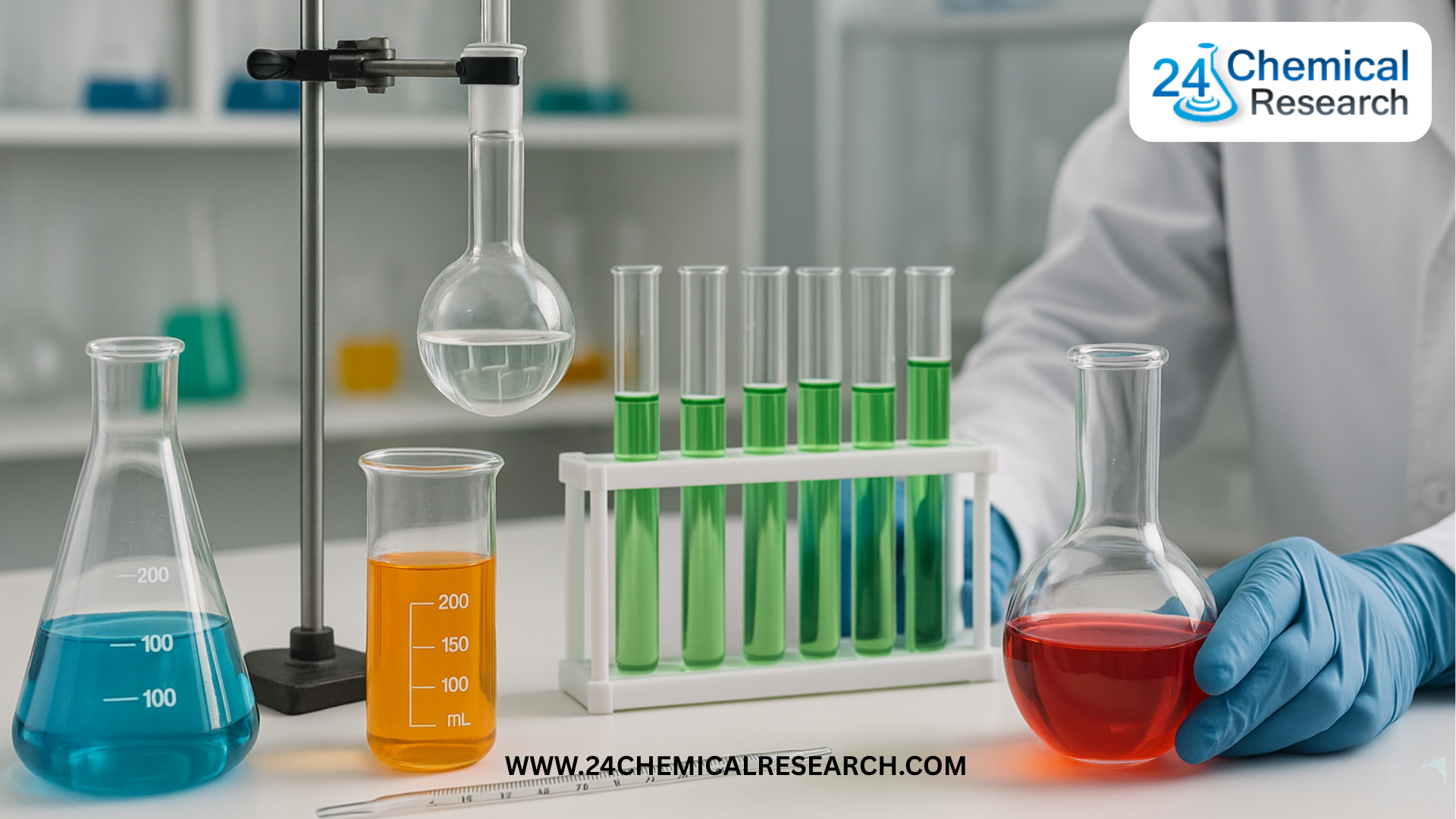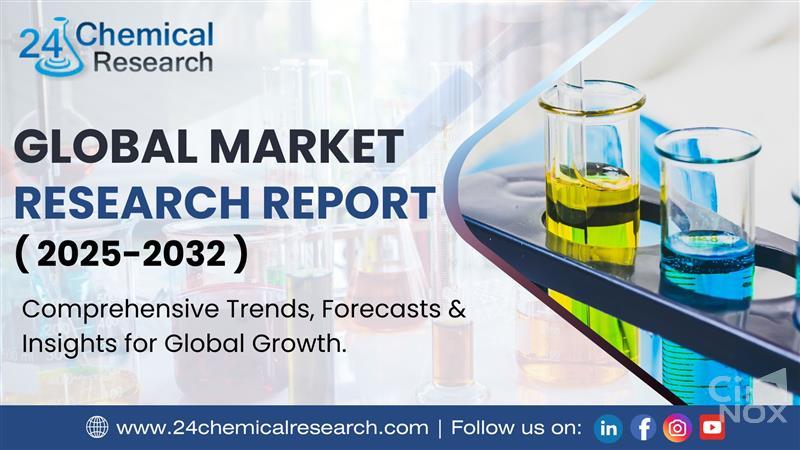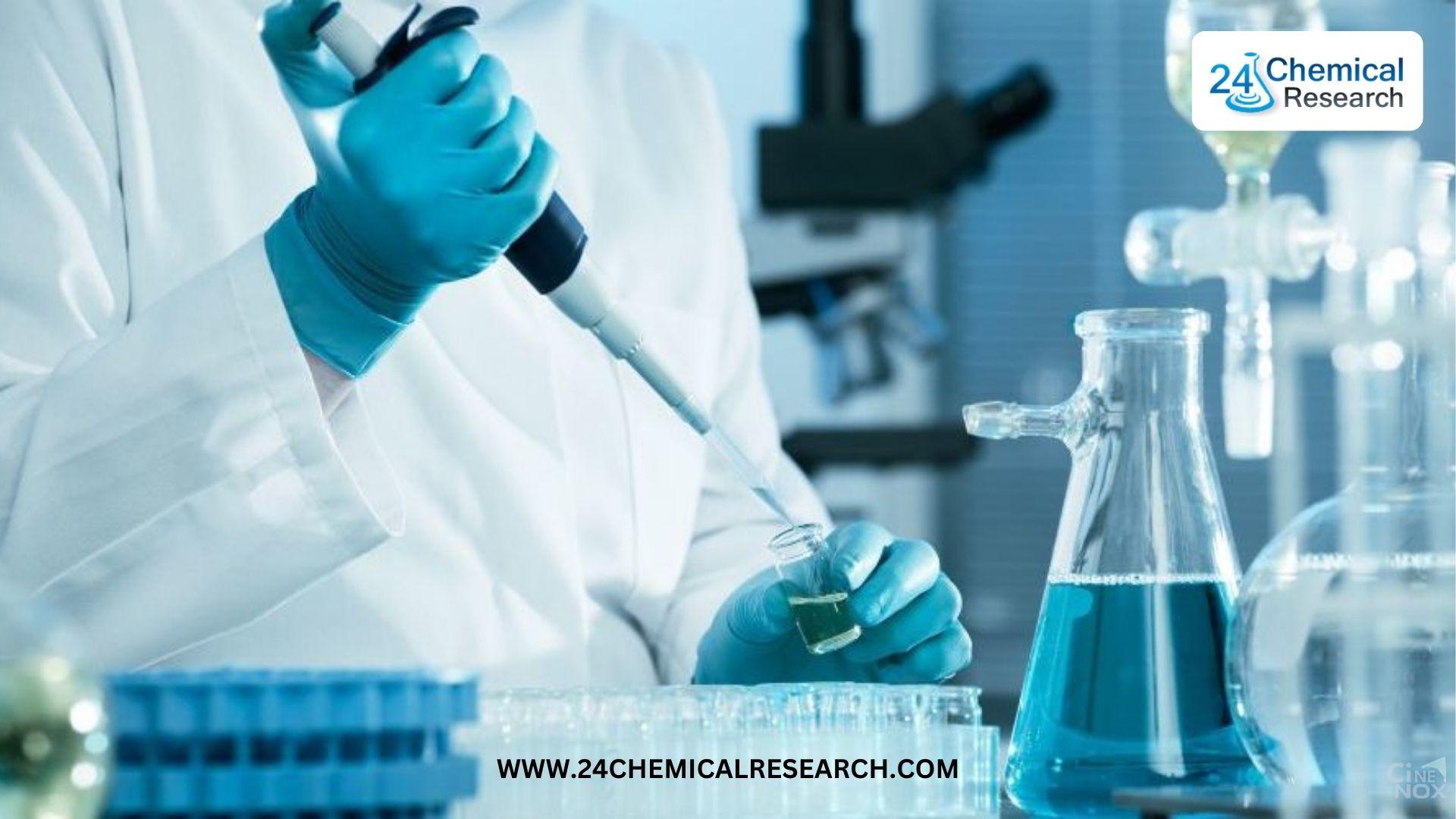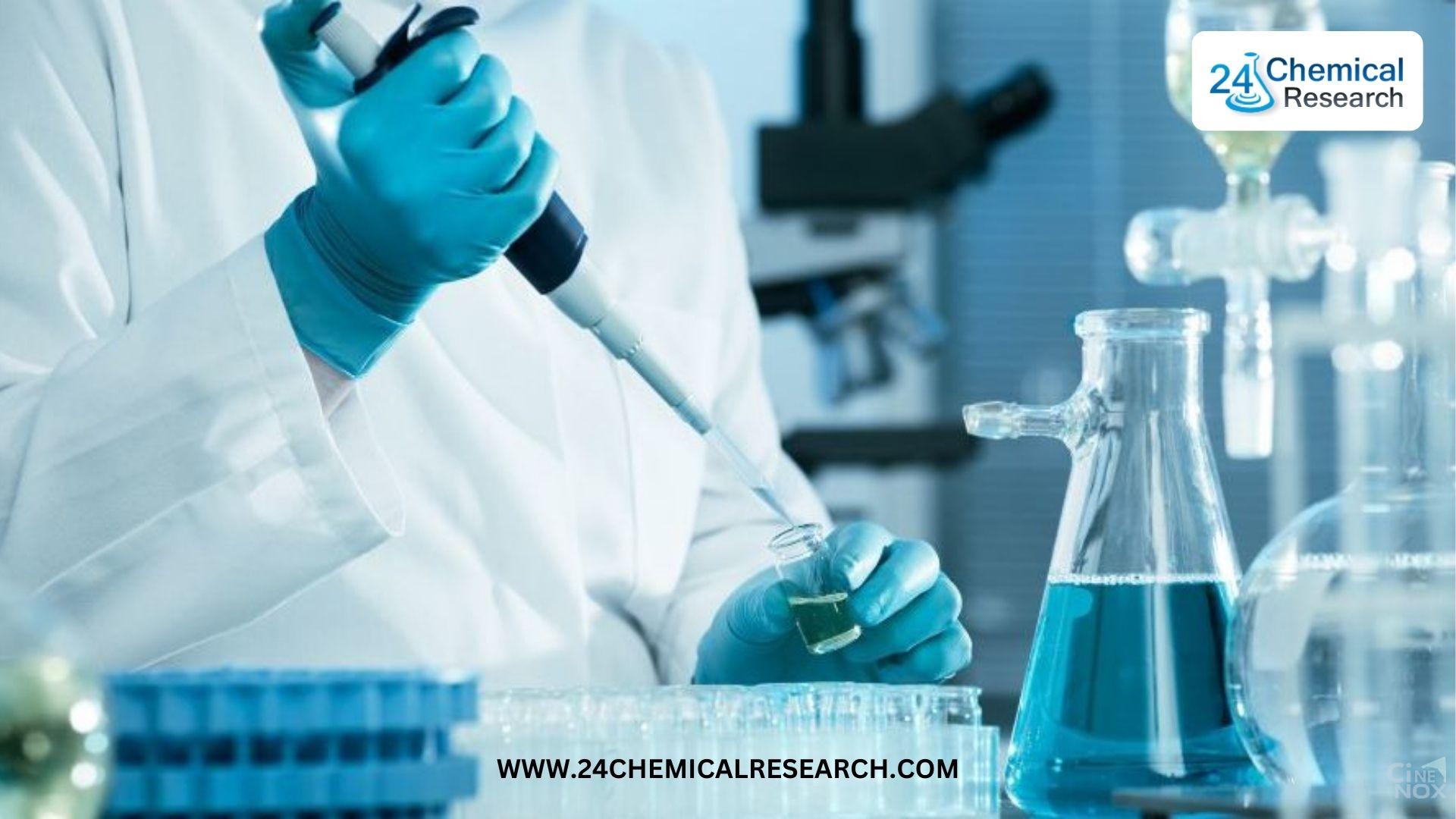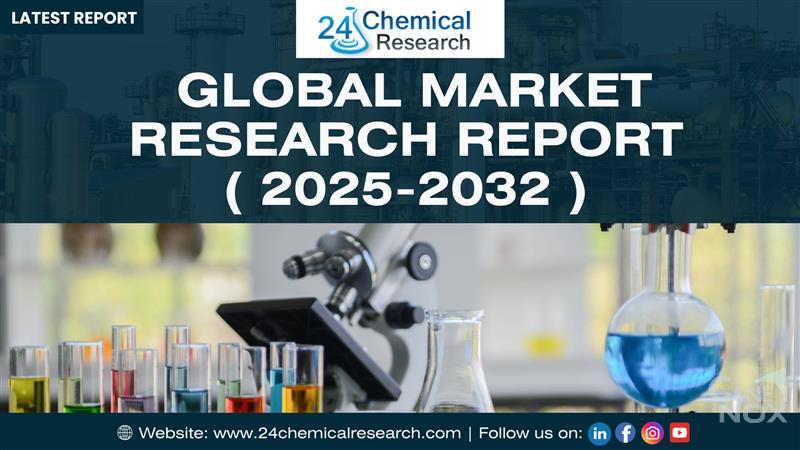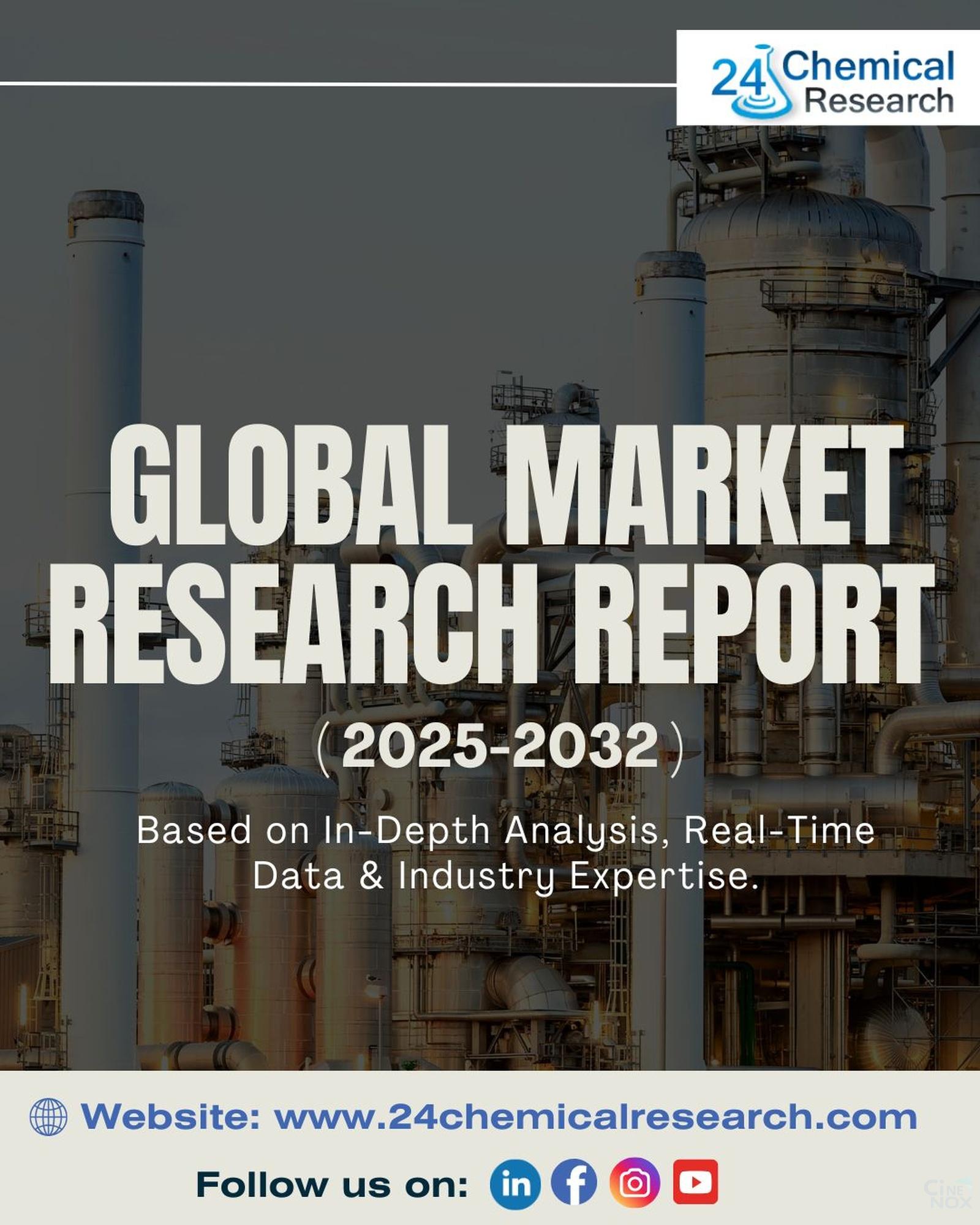Welding Filler Material Market, Global Outlook and Forecast 2025-2032
The global Welding Filler Material Market continues to expand steadily, with its valuation reaching US$ 4.89 billion in 2024. According to the latest industry analysis, the market is projected to grow at a CAGR of 5.7%, reaching approximately US$ 7.23 billion by 2032. This growth is largely fueled by rising industrialization, infrastructure development, and advancements in welding technologies.
https://www.24chemicalresearch.com/download-sample/296575/global-welding-filler-material-forecast-market-2025-2032-571
Market Overview & Regional Analysis
Asia-Pacific leads the global welding filler material market, hosting major manufacturing hubs in China, Japan, and India. The region benefits from rapid industrialization and government initiatives supporting infrastructure development. North America follows closely, driven by technological advancements in welding processes and significant defense and aerospace sector investments.
Europe maintains steady growth through stringent quality standards and automotive manufacturing excellence. Emerging economies in Latin America and Middle East & Africa show promising potential, supported by expanding construction activities and energy sector investments.
Key Market Drivers and Opportunities
The market's growth stems from increasing construction activities, renewable energy projects, and automotive production. Advancements in welding technologies, including automation and laser welding, create new opportunities for specialized filler materials.
Growing emphasis on sustainable welding solutions presents opportunities for eco-friendly filler materials. The offshore oil & gas sector and nuclear power plant maintenance drive demand for high-performance welding consumables capable of withstanding extreme conditions.
Challenges & Restraints
The welding filler material market faces challenges including raw material price volatility and complex regulatory compliance. Skilled labor shortages and the high cost of advanced welding technologies may restrain market growth in developing regions. Intense competition and the need for continuous product innovation remain persistent challenges for market players.
Market Segmentation by Type
Welding Wire
Welding Rod
Filling Gas
Others
Download FREE Sample Report:
https://www.24chemicalresearch.com/download-sample/296575/global-welding-filler-material-forecast-market-2025-2032-571
Market Segmentation by Application
Building Construction
Heavy Industrial
Transport
Other
Market Segmentation and Key Players
EWM
The Linde Group
Praxair Incorporated
Air Liquide
Illinois Tools Works
Lincoln Electric
FAR EAST ALLOY
Yiyan Machinery
North Seiko Welding Material
Xooz Machinery Equipment
Leigong Welding Alloys
Yingsheng Hanjiecailiao
Tianjin Bridge Welding Materials
Report Scope
This report presents a comprehensive analysis of the global and regional markets for Welding Filler Material, covering the period from 2024 to 2032. It includes detailed insights into the current market status and outlook across various regions and countries, with specific focus on:
Sales, sales volume, and revenue forecasts
Detailed segmentation by type and application
In addition, the report offers in-depth profiles of key industry players, including:
Company profiles
Product specifications
Production capacity and sales
Revenue, pricing, gross margins
Sales performance
It further examines the competitive landscape, highlighting the major vendors and identifying the critical factors expected to challenge market growth.
As part of this research, we surveyed Welding Filler Material manufacturers and industry experts. The survey covered various aspects, including:
Revenue and demand trends
Product types and recent developments
Strategic plans and market drivers
Industry challenges, obstacles, and potential risks
Get Full Report Here:
https://www.24chemicalresearch.com/reports/296575/global-welding-filler-material-forecast-market-2025-2032-571
International: +1(332) 2424 294 | Asia: +91 9169162030
Website:
https://www.24chemicalresearch.com/
Follow us on LinkedIn:
https://www.linkedin.com/company/24chemicalresearchWelding Filler Material Market, Global Outlook and Forecast 2025-2032
The global Welding Filler Material Market continues to expand steadily, with its valuation reaching US$ 4.89 billion in 2024. According to the latest industry analysis, the market is projected to grow at a CAGR of 5.7%, reaching approximately US$ 7.23 billion by 2032. This growth is largely fueled by rising industrialization, infrastructure development, and advancements in welding technologies.
https://www.24chemicalresearch.com/download-sample/296575/global-welding-filler-material-forecast-market-2025-2032-571
Market Overview & Regional Analysis
Asia-Pacific leads the global welding filler material market, hosting major manufacturing hubs in China, Japan, and India. The region benefits from rapid industrialization and government initiatives supporting infrastructure development. North America follows closely, driven by technological advancements in welding processes and significant defense and aerospace sector investments.
Europe maintains steady growth through stringent quality standards and automotive manufacturing excellence. Emerging economies in Latin America and Middle East & Africa show promising potential, supported by expanding construction activities and energy sector investments.
Key Market Drivers and Opportunities
The market's growth stems from increasing construction activities, renewable energy projects, and automotive production. Advancements in welding technologies, including automation and laser welding, create new opportunities for specialized filler materials.
Growing emphasis on sustainable welding solutions presents opportunities for eco-friendly filler materials. The offshore oil & gas sector and nuclear power plant maintenance drive demand for high-performance welding consumables capable of withstanding extreme conditions.
Challenges & Restraints
The welding filler material market faces challenges including raw material price volatility and complex regulatory compliance. Skilled labor shortages and the high cost of advanced welding technologies may restrain market growth in developing regions. Intense competition and the need for continuous product innovation remain persistent challenges for market players.
Market Segmentation by Type
Welding Wire
Welding Rod
Filling Gas
Others
Download FREE Sample Report: https://www.24chemicalresearch.com/download-sample/296575/global-welding-filler-material-forecast-market-2025-2032-571
Market Segmentation by Application
Building Construction
Heavy Industrial
Transport
Other
Market Segmentation and Key Players
EWM
The Linde Group
Praxair Incorporated
Air Liquide
Illinois Tools Works
Lincoln Electric
FAR EAST ALLOY
Yiyan Machinery
North Seiko Welding Material
Xooz Machinery Equipment
Leigong Welding Alloys
Yingsheng Hanjiecailiao
Tianjin Bridge Welding Materials
Report Scope
This report presents a comprehensive analysis of the global and regional markets for Welding Filler Material, covering the period from 2024 to 2032. It includes detailed insights into the current market status and outlook across various regions and countries, with specific focus on:
Sales, sales volume, and revenue forecasts
Detailed segmentation by type and application
In addition, the report offers in-depth profiles of key industry players, including:
Company profiles
Product specifications
Production capacity and sales
Revenue, pricing, gross margins
Sales performance
It further examines the competitive landscape, highlighting the major vendors and identifying the critical factors expected to challenge market growth.
As part of this research, we surveyed Welding Filler Material manufacturers and industry experts. The survey covered various aspects, including:
Revenue and demand trends
Product types and recent developments
Strategic plans and market drivers
Industry challenges, obstacles, and potential risks
Get Full Report Here: https://www.24chemicalresearch.com/reports/296575/global-welding-filler-material-forecast-market-2025-2032-571
International: +1(332) 2424 294 | Asia: +91 9169162030
Website: https://www.24chemicalresearch.com/
Follow us on LinkedIn: https://www.linkedin.com/company/24chemicalresearch


